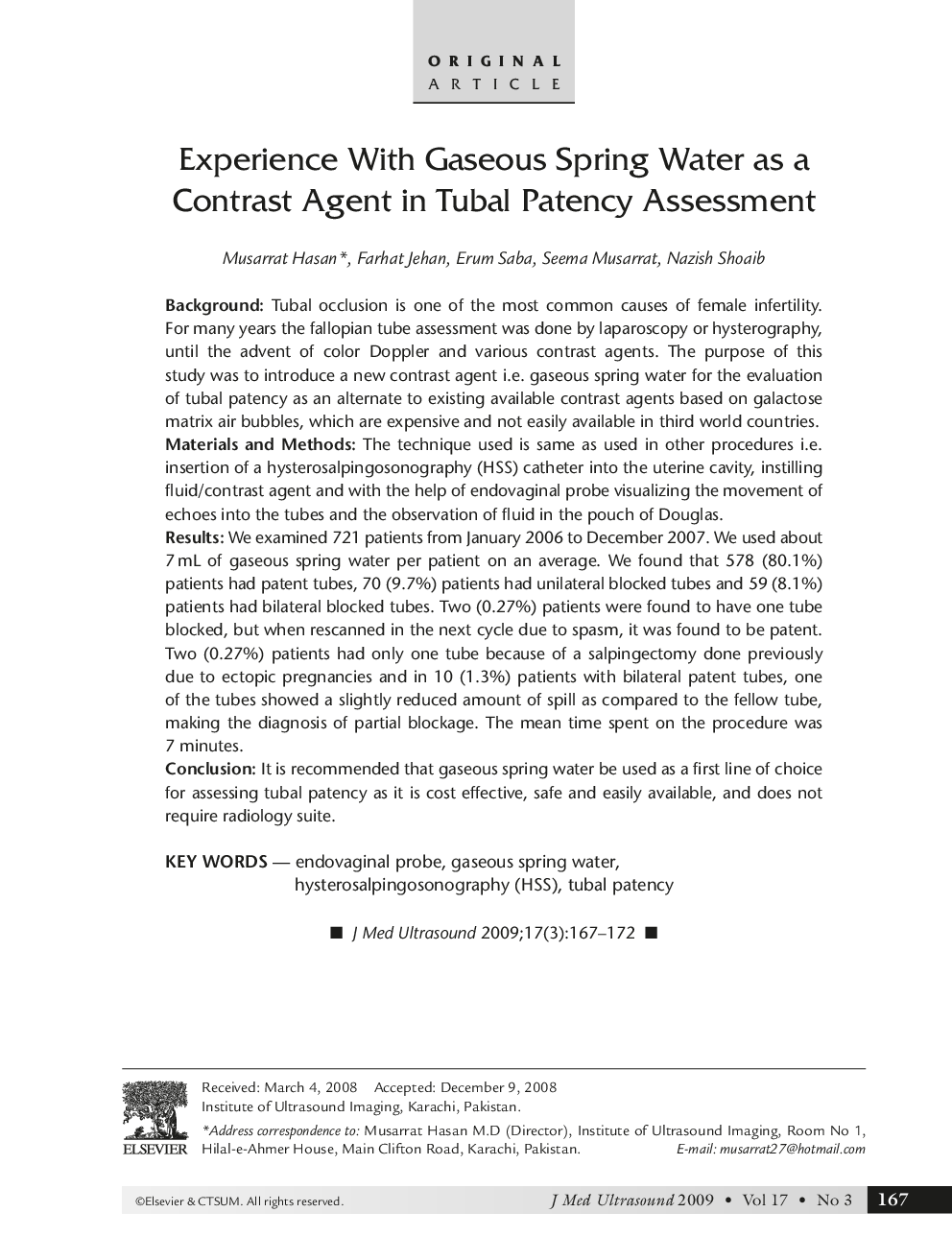| Article ID | Journal | Published Year | Pages | File Type |
|---|---|---|---|---|
| 4233315 | Journal of Medical Ultrasound | 2009 | 6 Pages |
BackgroundTubal occlusion is one of the most common causes of female infertility. For many years the fallopian tube assessment was done by laparoscopy or hysterography, until the advent of color Doppler and various contrast agents. The purpose of this study was to introduce a new contrast agent i.e. gaseous spring water for the evaluation of tubal patency as an alternate to existing available contrast agents based on galactose matrix air bubbles, which are expensive and not easily available in third world countries.Materials and MethodsThe technique used is same as used in other procedures i.e. insertion of a hysterosalpingosonography (HSS) catheter into the uterine cavity, instilling fluid/contrast agent and with the help of endovaginal probe visualizing the movement of echoes into the tubes and the observation of fluid in the pouch of Douglas.ResultsWe examined 721 patients from January 2006 to December 2007. We used about 7 mL of gaseous spring water per patient on an average. We found that 578 (80.1%) patients had patent tubes, 70 (9.7%) patients had unilateral blocked tubes and 59 (8.1%) patients had bilateral blocked tubes. Two (0.27%) patients were found to have one tube blocked, but when rescanned in the next cycle due to spasm, it was found to be patent. Two (0.27%) patients had only one tube because of a salpingectomy done previously due to ectopic pregnancies and in 10 (1.3%) patients with bilateral patent tubes, one of the tubes showed a slightly reduced amount of spill as compared to the fellow tube, making the diagnosis of partial blockage. The mean time spent on the procedure was 7 minutes.ConclusionIt is recommended that gaseous spring water be used as a first line of choice for assessing tubal patency as it is cost effective, safe and easily available, and does not require radiology suite.
